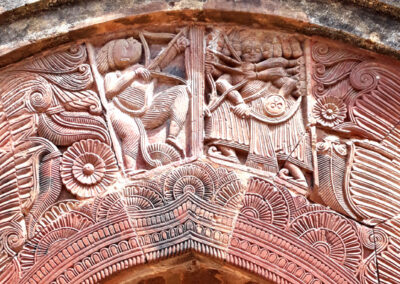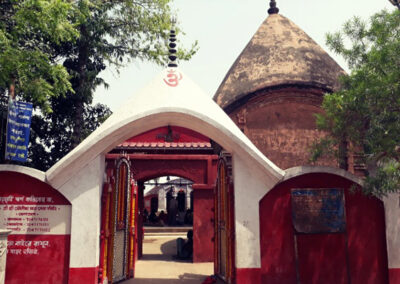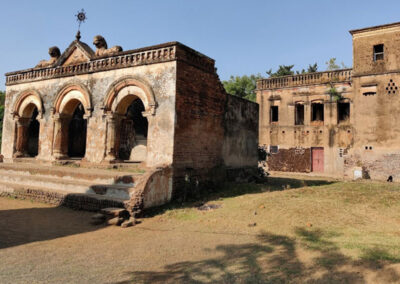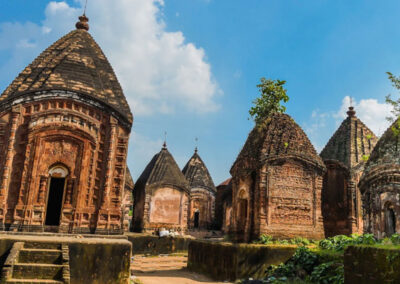Just 40 kms from Bhagabatipur Container farmstay is the temple village of Maluti or Malooti. As of now, there are a group of 72 terracotta temples in Maluti, which according to the Indian Trust for Rural Heritage and Development (ITRHD), were built between the 17th and 19th centuries. The kings of Baj Basanta dynasty built these temples in Maluti, their capital, inspired by goddess Mauliskha, their family deity. Many of the temples are deified with different denominations of gods and goddesses such as Shiva, Durga, Kali and Vishnu. The Global Heritage Fund (GHF) has declared this site as one of the world’s 12 most endangered cultural heritage sites.
It is believed, that originally 108 temples were constructed but later generations could not maintain such a huge number of monuments, and most were left uncared for. With the passing of time, as many as 36 monuments deteriorated and finally crumbled completely. All these 72 terracotta temples were built in four groups in Maluti near the present border between Jharkhand and West Bengal close to the Chila river, which meets the Dwarka river near Tarapith.
Apart from the Shiva temples, there are eight temples dedicated to Goddess Kali. There is a temple dedicated to the saint Bamakhyapa where his trident has been showcased. Another important temple is that of Manasa Devi. However, the main temple is that of goddess Mauliskha, which is the family deity of the Baj Basanta dynasty. The goddess Mauliskha faces west and is said to be the elder sister of goddess Tara.
According to Prof. David McCutchion, these temples were built to the Cara-cala design consisting a square chamber “surmounted internally by a dome built over pendentives” with corbelled cornices which give the appearance of a hut-shaped roof. The temples have been decorated with sculptures of episodes from the epic Mahabharata and Ramayana, and the fight between Durga and Mahishasura. Scenes of village life are also carved at some locations of the temples. There are a few inscriptions also on the temples which give details of building of the temples and also on the socio-political history of that period.



